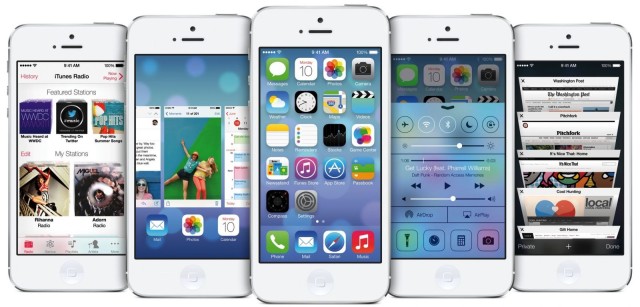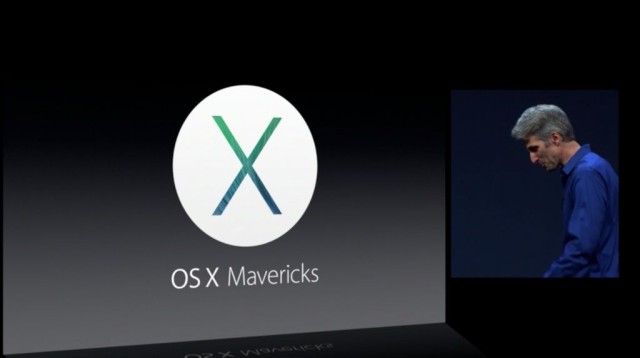There’s a conspiracy among some Apple watchers: the ‘iOS-ification’ of the Mac.
The past couple versions of OS X, specifically Mountain Lion, have proven that Apple is not afraid to bring features from its mobile operating system to the desktop. Sometimes the borrowing is incredibly blatant, like the Mac version of Reminders, and sometimes the trend is more subtle, like when Apple inverted scrolling in OS X Lion to recreate the “natural” scrolling experience from a touchscreen.
Before the June unveiling of OS X Mavericks, it would not have been farfetched to look at the evolution of OS X and iOS and draw the conclusion that the two were becoming more alike. Now that we’ve seen Mavericks, it’s clear that OS X isn’t getting more iOS-ified like everyone feared. The two platforms are headed in different directions and while they share similarities, Apple does not appear to be on a mission of convergence. Cupertino has decreed that never the twain shall meet.
The Walled Garden
Compare iOS 7 to Mavericks, and the untrained eye could be led to believe that the two operating systems were designed by separate companies. iOS 7 is full of bright, unrestrained colors and abstract interface elements, while Mavericks largely still looks like the OS X we know and love. There are plenty of great improvements in Mavericks, but the general aesthetic of the OS is by no means a radical departure from Mountain Lion. Mavericks remains grounded, while iOS has been set free to soar into a new world of design.
“Mavericks remains grounded, while iOS has been set free to soar into a new world of design.”
To Apple, iOS is the software used by its largest and most profitable customer base: iPhone, iPad and iPod touch owners. iOS is designed to appeal to the masses and offer a consistent experience from one device to the next. iOS 7’s aesthetic design may be incredibly different, even jarring, to users of past iOS versions, but the core philosophy behind the platform hasn’t changed in 2013.
Unlike OS X, the file system in iOS is totally invisible. You can send media and certain files in-between certain apps, but there’s nothing like a Finder equivalent—no ability to open a zip file’s contents like you can on the Mac. The innards of what composes iOS are kept hidden so you don’t sweat the small stuff, or more importantly, do something damaging to the smartphone you rely on every day.
Each iOS app is sandboxed, meaning that it is forced to operate within a silo of its own under Apple’s rules. App Store apps have limited ability to talk to each another and they definitely can’t take over all of the OS, like Facebook Home on Android. An analogy that’s commonly used is a walled garden. You can enjoy the experience, just respect the boundaries.
Apple approaches iOS in a fundamentally different way than OS X, and that’s a good thing for the future of the Mac.
“PCs are going to be like trucks.”
“PCs are going to be like trucks,” said Steve Jobs, hitting the nail on the head way back in 2010. Like the car industry has been revolutionized by the automatic transmission, power steering, and hybrids, the world of traditional desktop computers has been upturned by smartphones and tablets. “Trucks” will always be needed, just not as much. The Mac is still a cornerstone for Apple. It will never have the huge install base of iOS, but that doesn’t make it any less important. Since when has Apple only cared about taking as much market share as possible?

The recently unveiled Mavericks continues to bridge the gap between iOS with a couple of additions, like iBooks and Maps. But then there’s also plenty of new features for power users, like enhanced support for multiple displays, Finder Tabs, Timer Coalescing for more efficient CPU management, and App Nap for managing power. Apple has historically been about connecting the familiar with new, groundbreaking technology.
Word on the street is that Apple has given Mavericks less attention in recent months to devote resources to polishing up iOS 7 in time for its Worldwide Developers Conference (WWDC). That may explain why iOS 7 looks so different and Mavericks is more of an incremental upgrade to OS X. Now that Jony Ive is in charge of all software design at Apple, he surely has more tinkering to do with OS X if he wants to unify the company’s design language across platforms. He’s already stripped out most the garnish textures with Mavericks (“No cows were harmed in the making of this virtual interface,” said Apple’s Craig Federighi at WWDC), but there’s a lot of needed change for OS X to truly be ushered into the era of Ive.
“The Mac is still a cornerstone for Apple.”
That doesn’t mean OS X will eventually dissolve into iOS, at least not for decades to come. While explaining the reasoning behind naming OS X 10.9 “Mavericks” on stage at WWDC, Federighi said, “We’re really excited about the future of the Mac, and we want a set of names that will carry us for the next 10 years.” Future versions of OS X will be named after special places to Apple in California. OS X is an inspirational product for the company and it has its own vision.
This is the first time in several years that Apple’s mobile and desktop platforms look so different from one another. Will our concept of “desktop computers” not exist years down the road? Thanks to the rapid pace of innovation in the tablet industry, probably. Will underpinnings of OS X fade into obscurity as the platform is phased out by iOS? Certainly not.
It’s nice to know that iOS and OS X can co-exist in the post-PC era. The future remains bright and full of possibilities.




